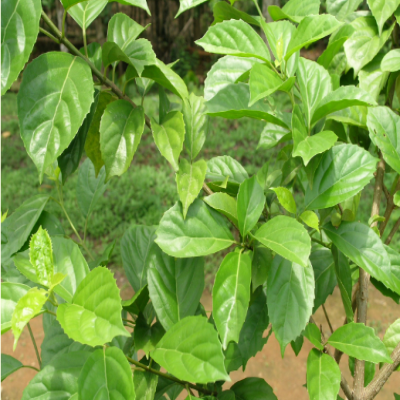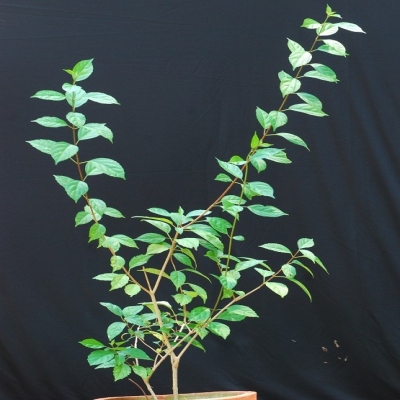Distribution and habitat: Found throughout India
Botany: A large shrub or a small tree up to 9 m in height with yellowish lenticellate bark, spinous large branches and yellowish brown woody aromatic root;
- Leaves: Simple, opposite, sometimes whorled, elliptic-ovate, membranous when young, coriaceous when mature, entire or irregularly toothed, primary lateral nerves 4-6 pairs.
- Flowers: Small, greenish yellow or greenish white with a strong disagreeable odour in corymbiform cymose panicles;
- Fruits: Globose drupes, black when ripe with persistent saucer- shaped calyx surrounding its base.
Chemical constituents: β- sitosterol and polyisoprenoid.
Properties: Antirheumatic, stimulant, bechic, astringent.
- Root is bitter, acrid, astringent, laxative, stomachic, carminative and tonic.
- Leaves are caraminative and galactogogue. Neuralgia, inflammations, cardiac disorder, anorexia, fever, asthma, cough, dyspepsia, flatulence, agalactia, rheumatalgia, neuralgia, tumours
Uses: Neuralgia, inflammations, cardiac disorder, anorexia, fever, asthma, cough, dyspepsia, flatulence, agalactia, rheumatalgia, neuralgia, tumours
Agrotechnology:
Propagation: Stem cuttings. Tip or middle portion of stem having 15-20 cm lenth and 3-4 buds.
Planting: Spacing is 2 m x 2 m.


